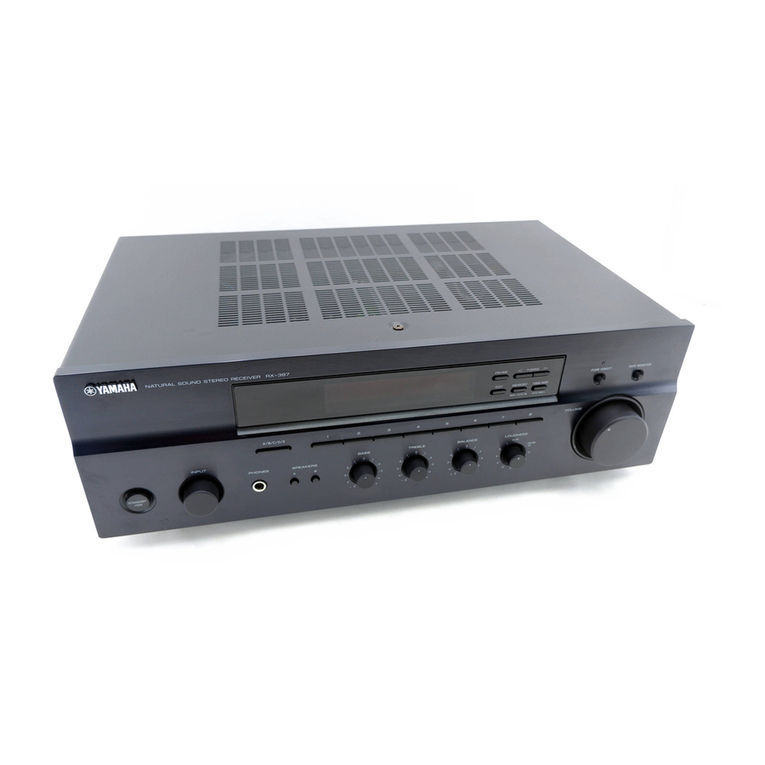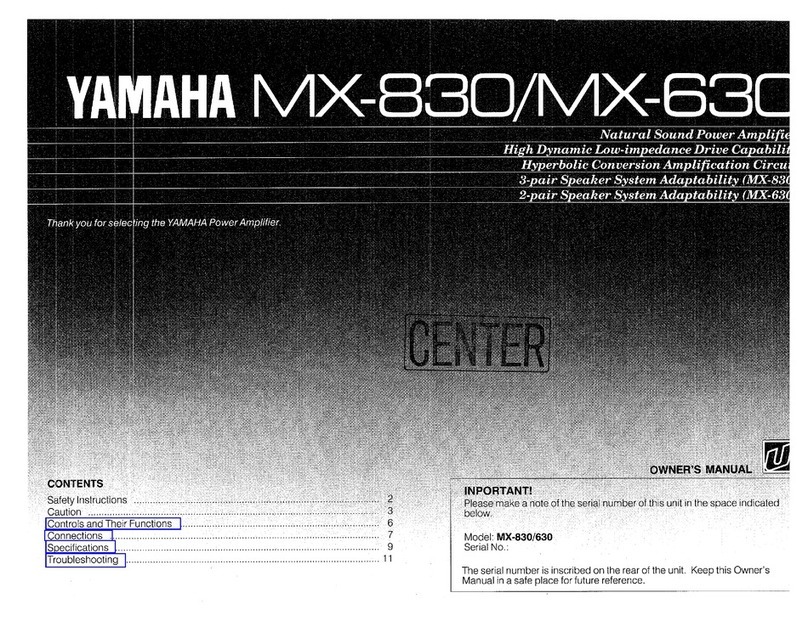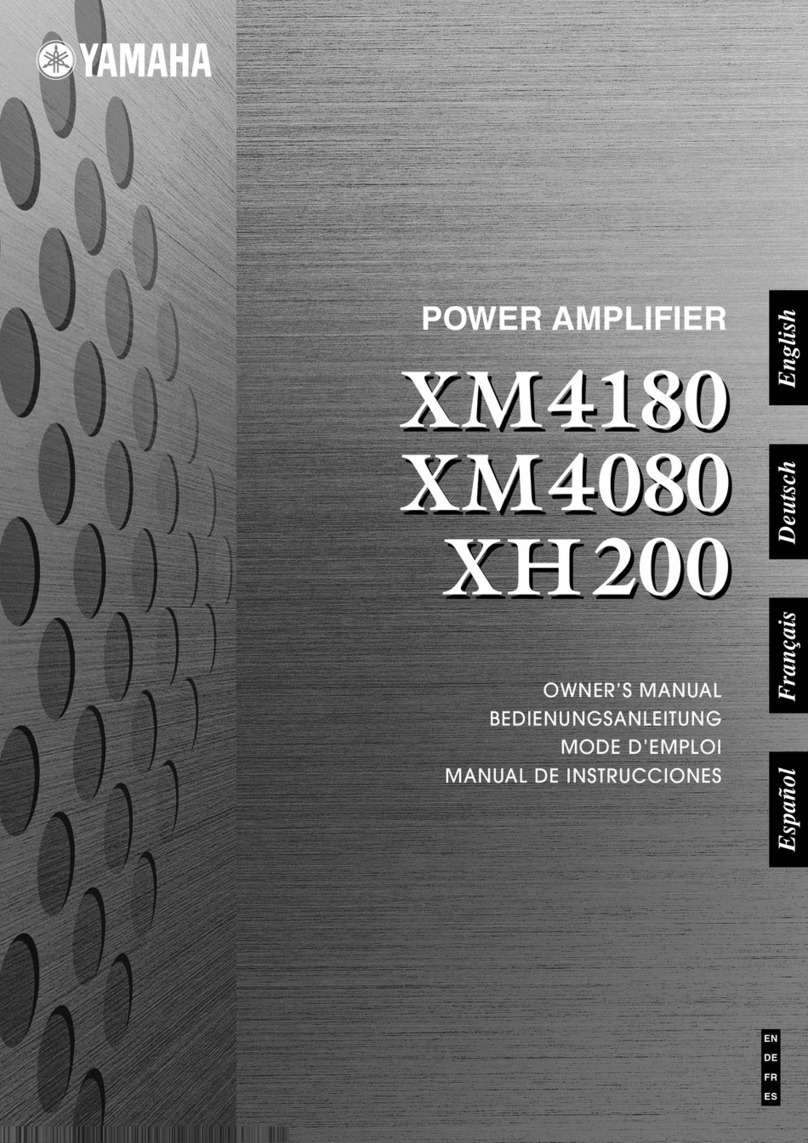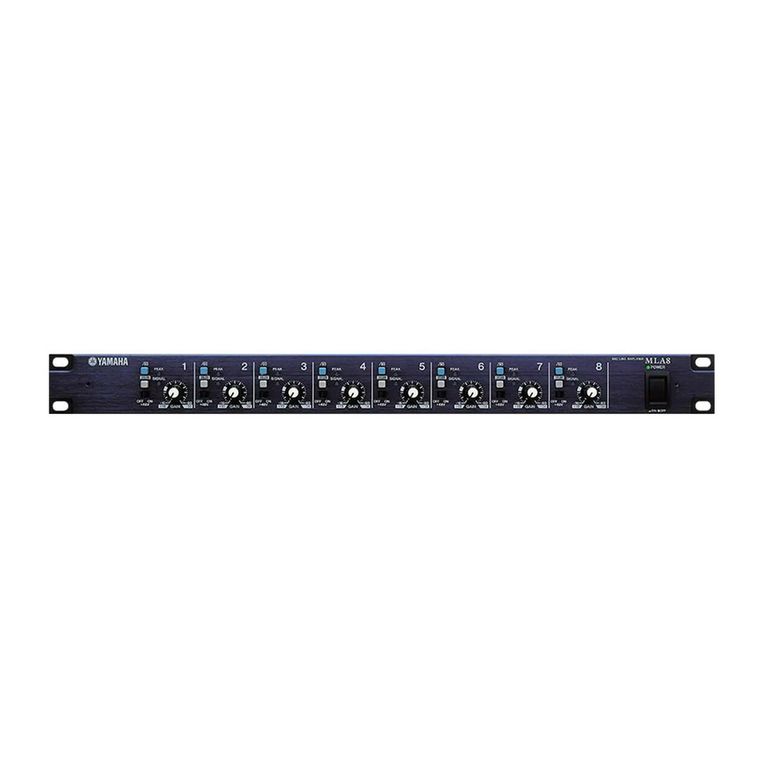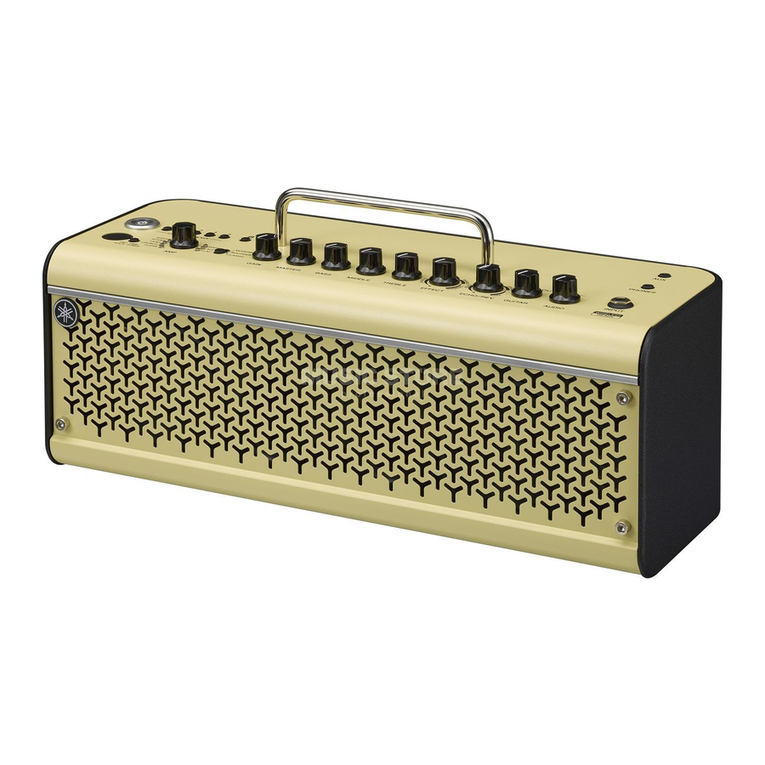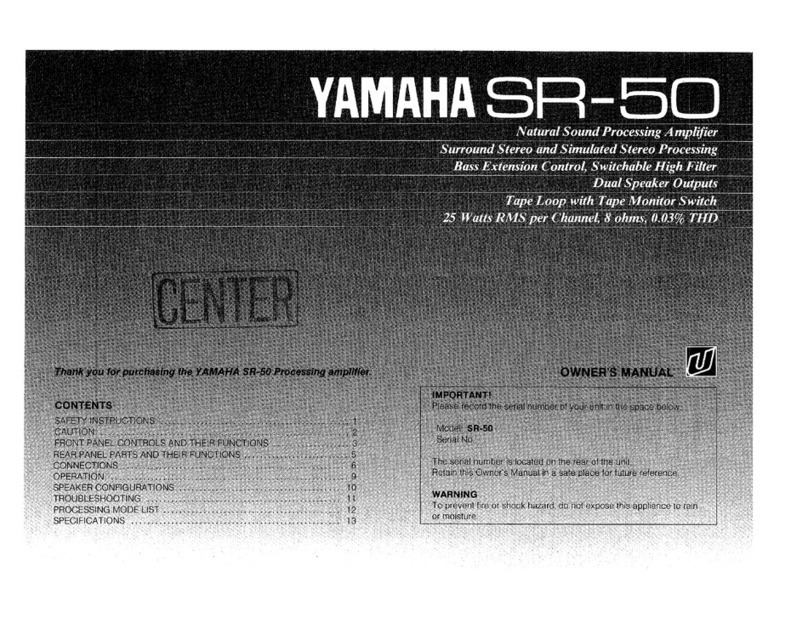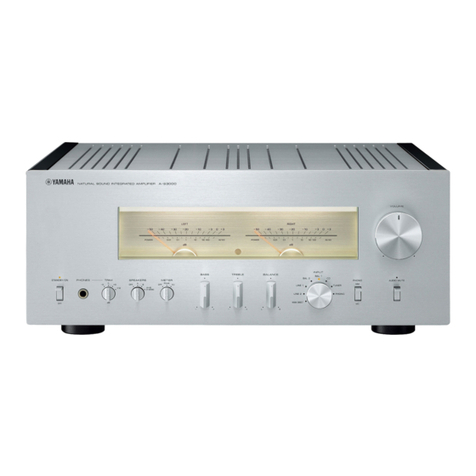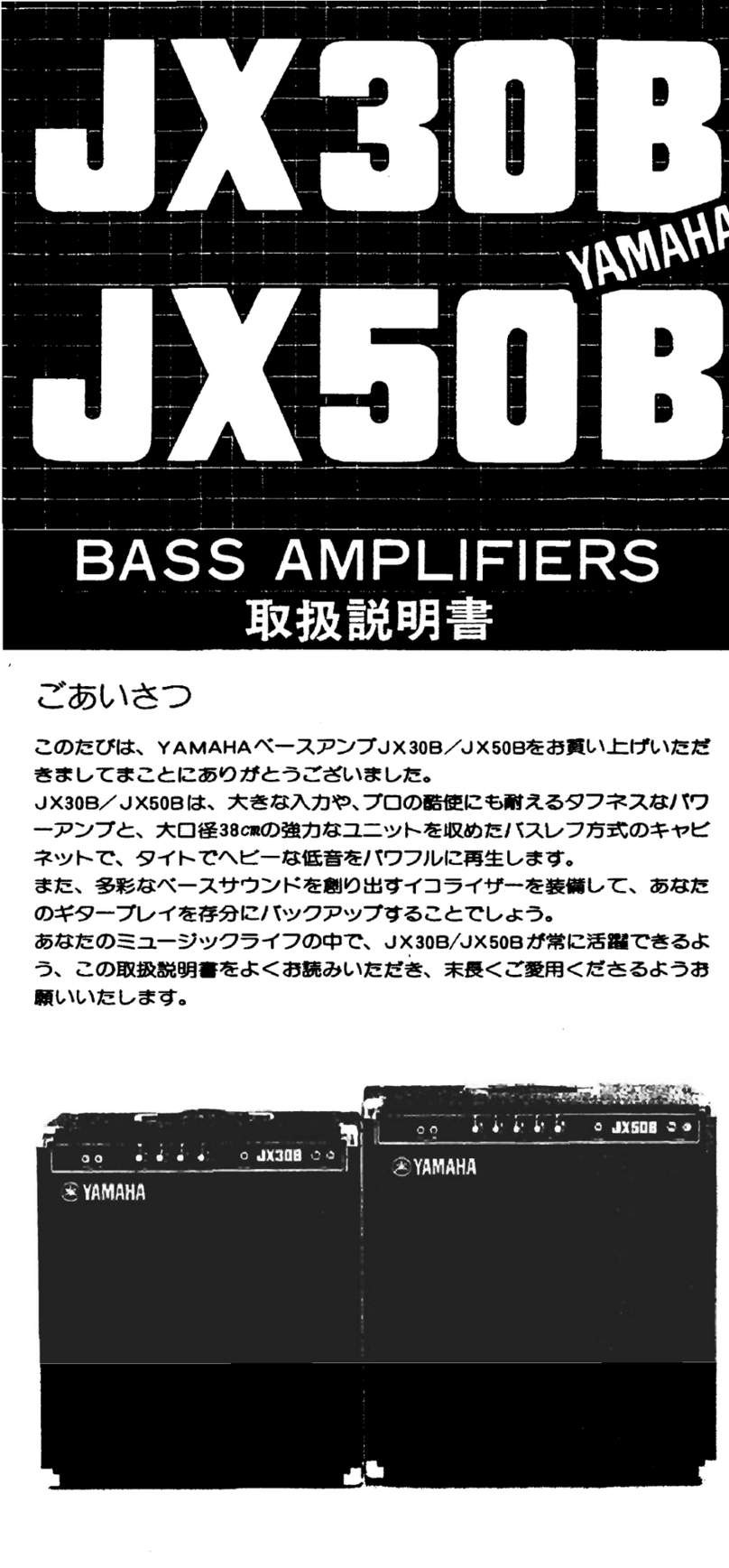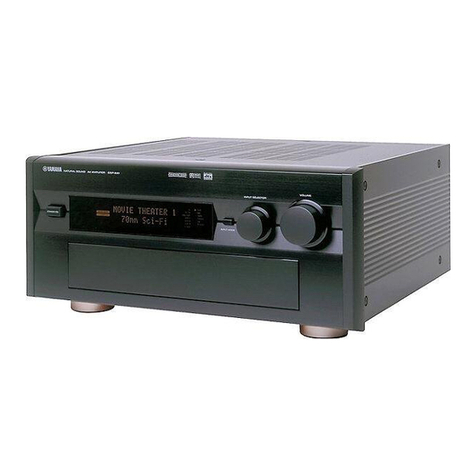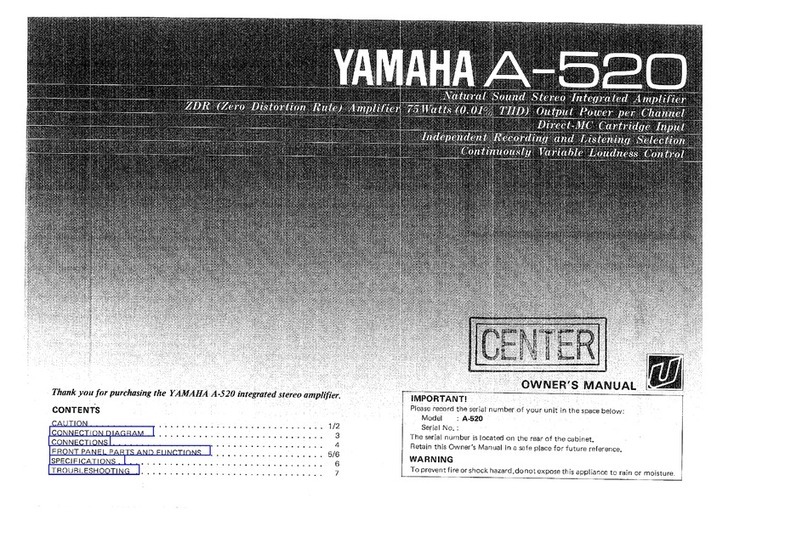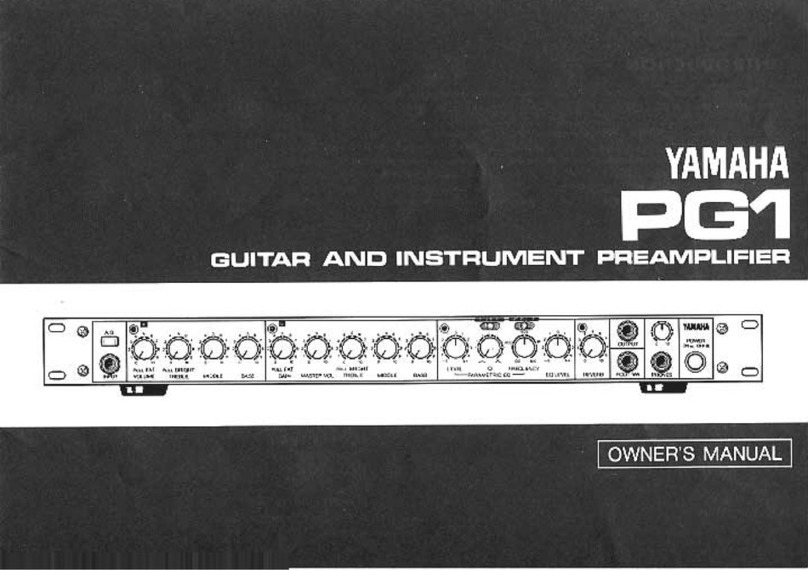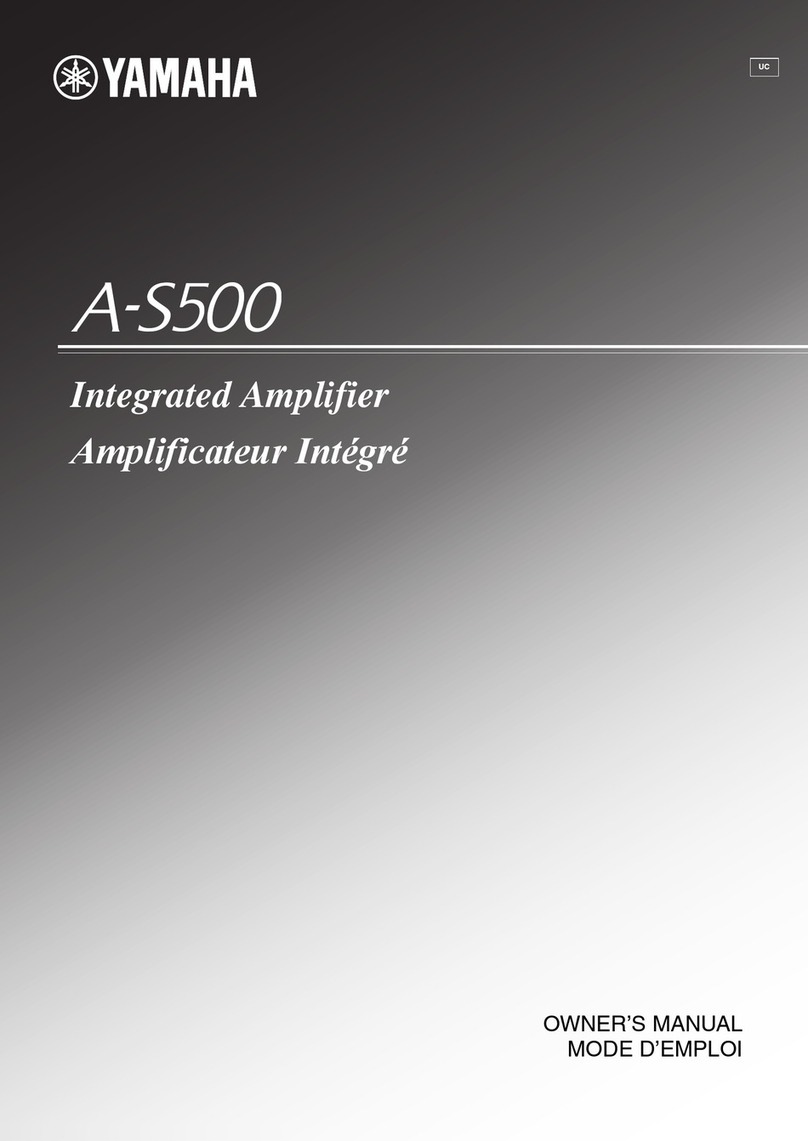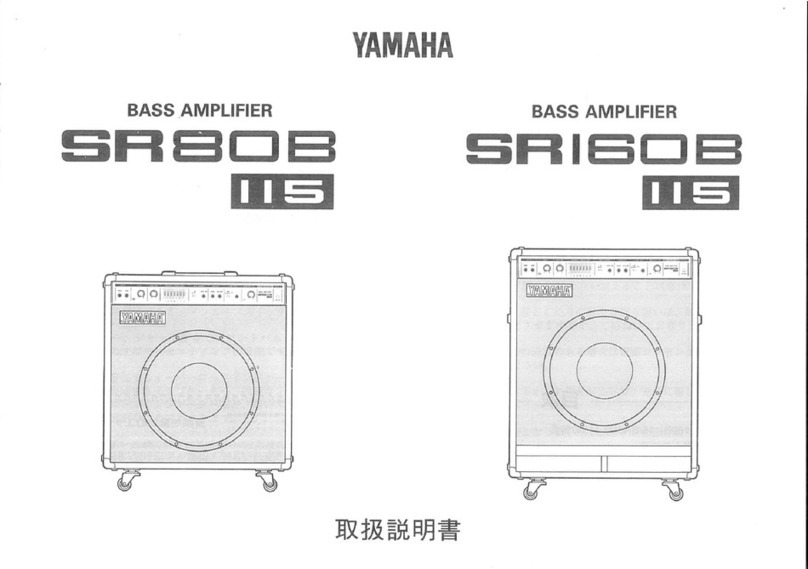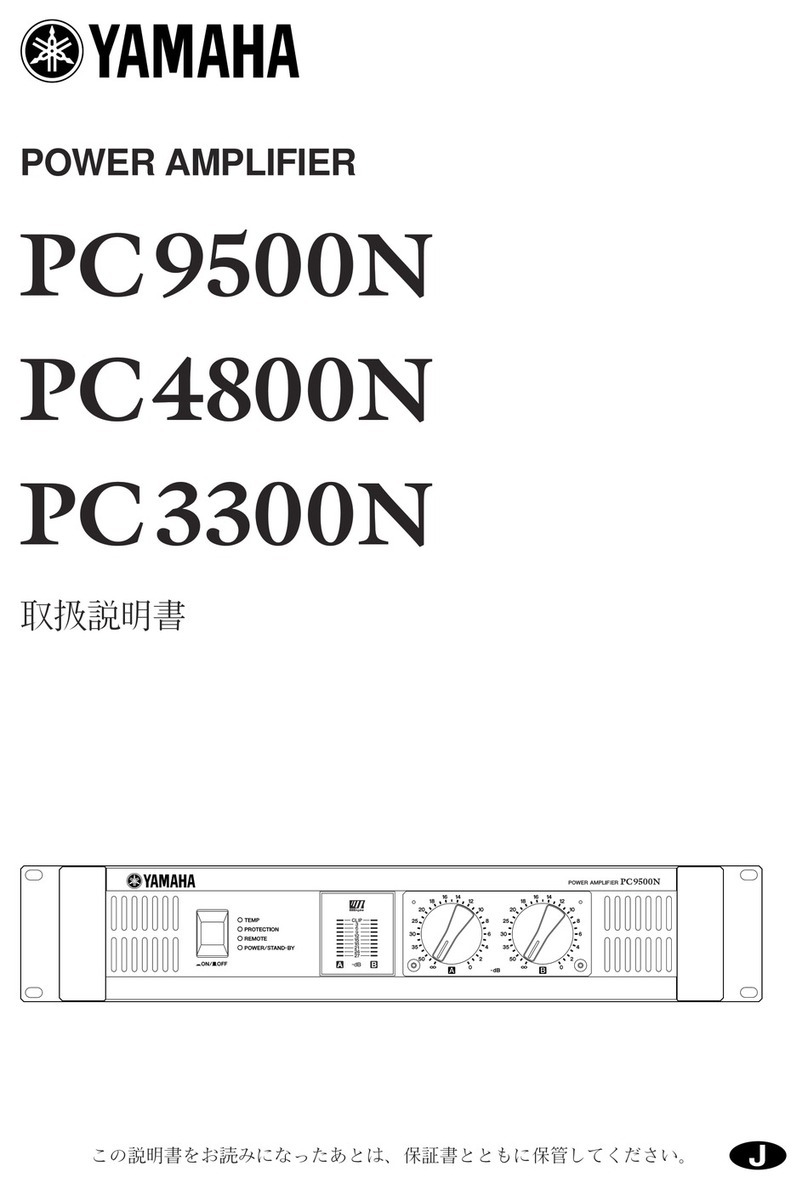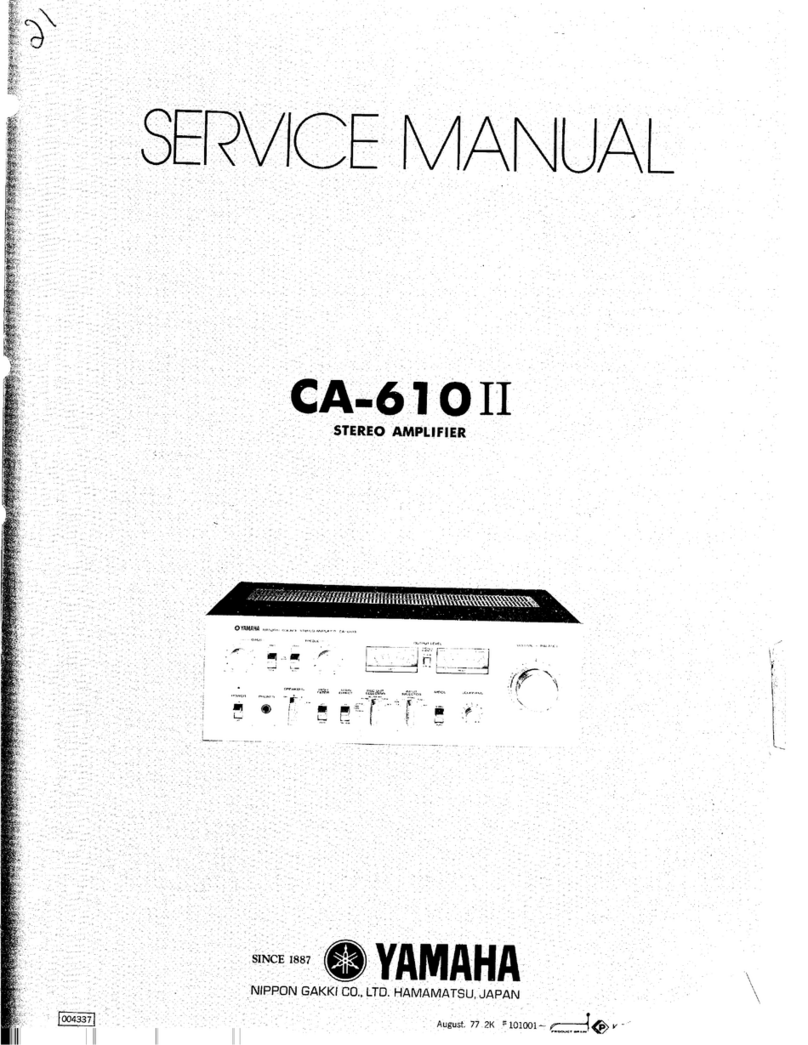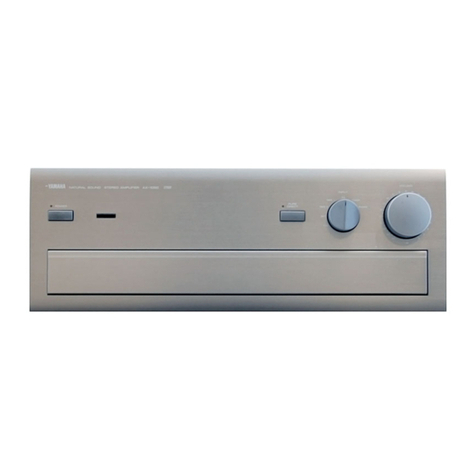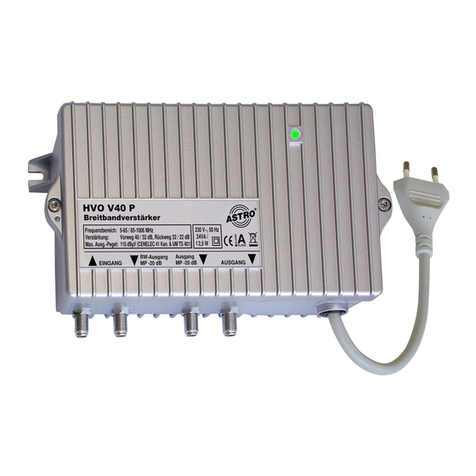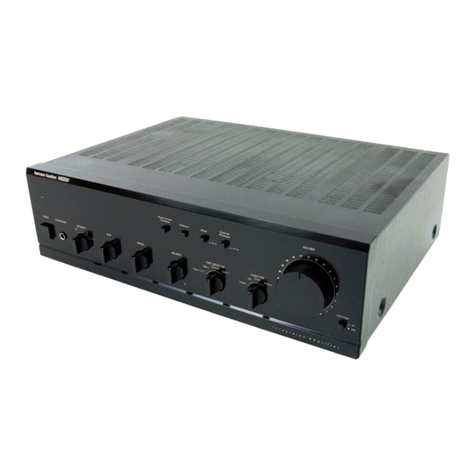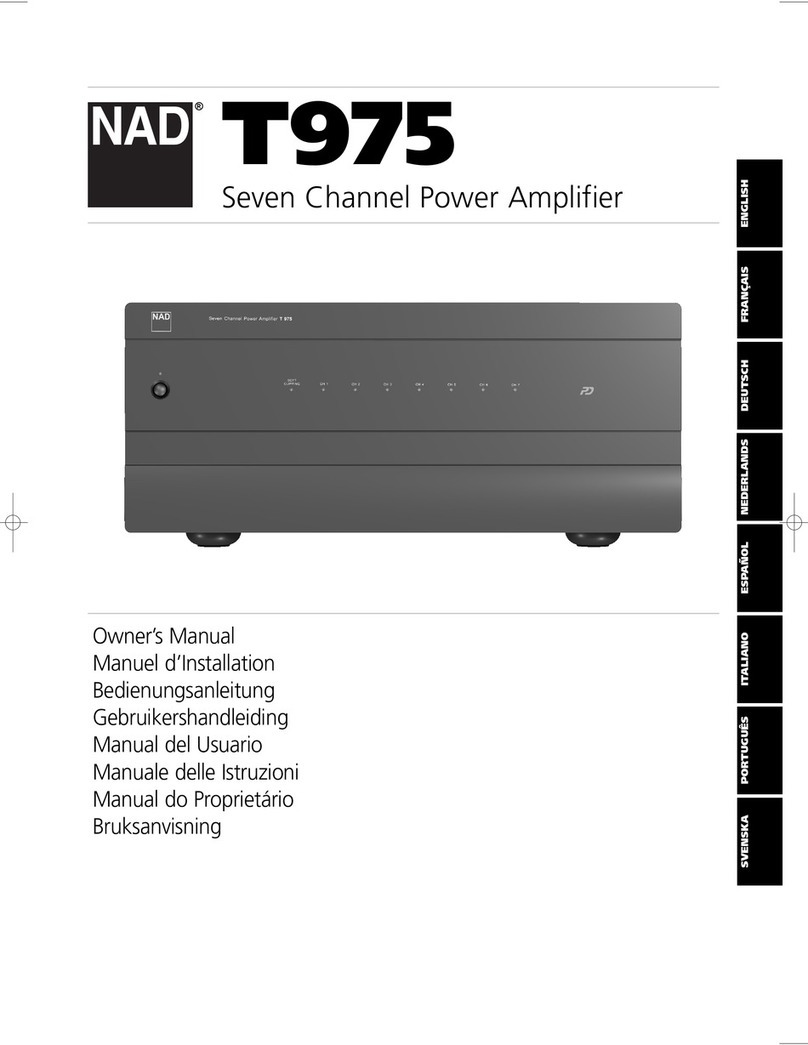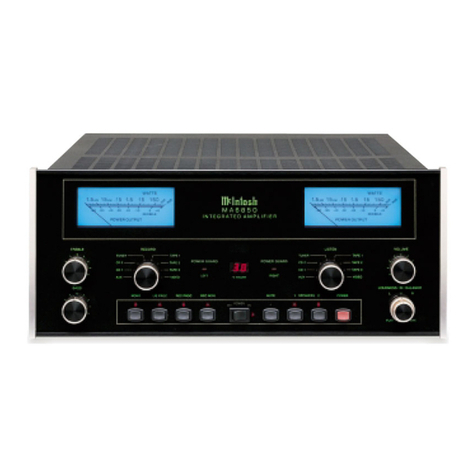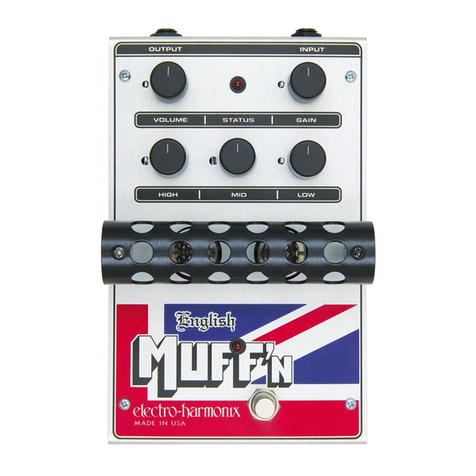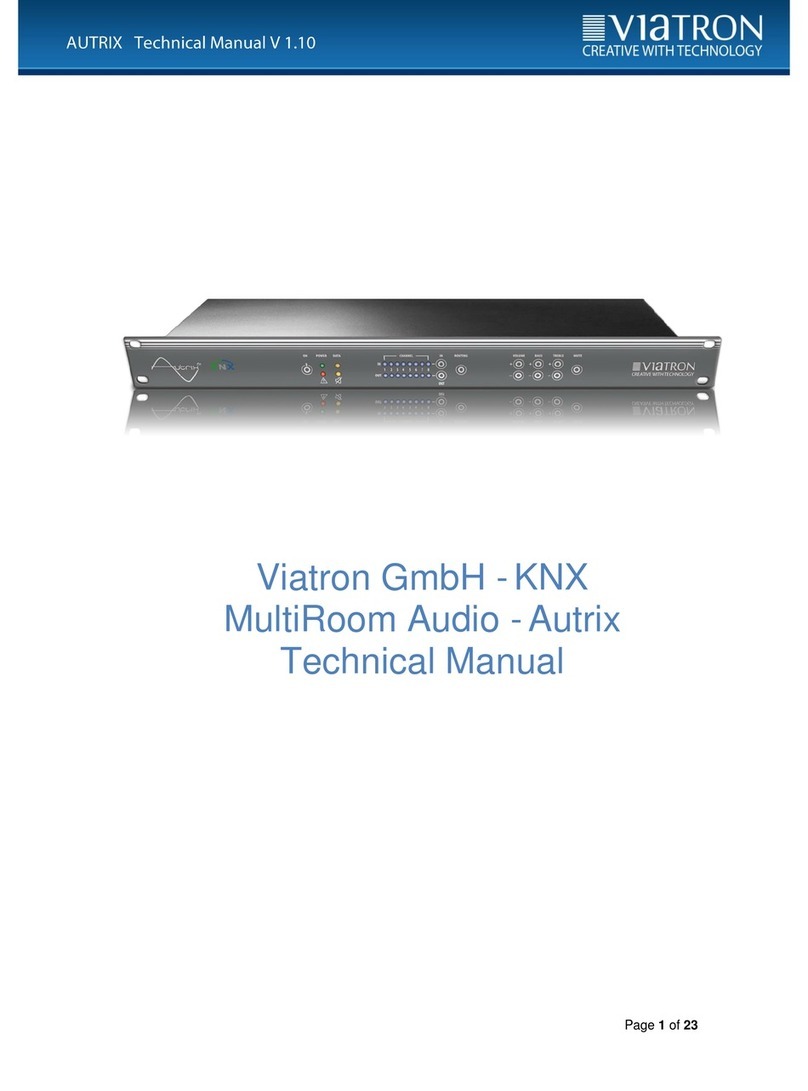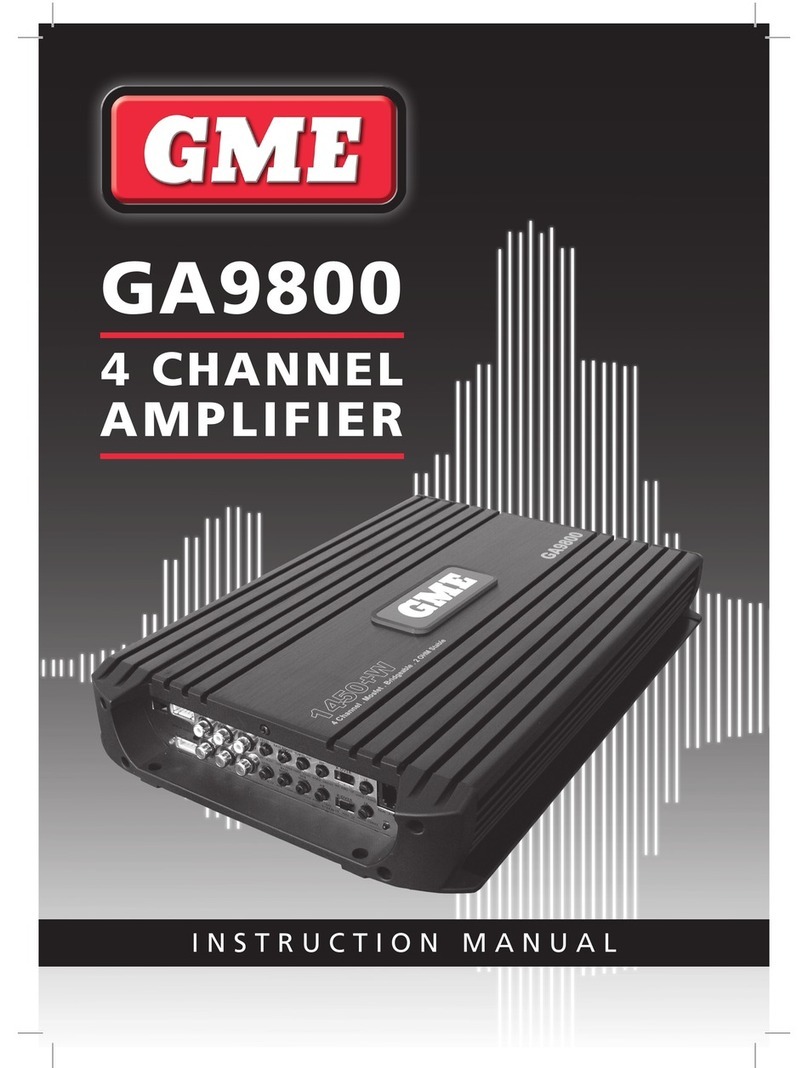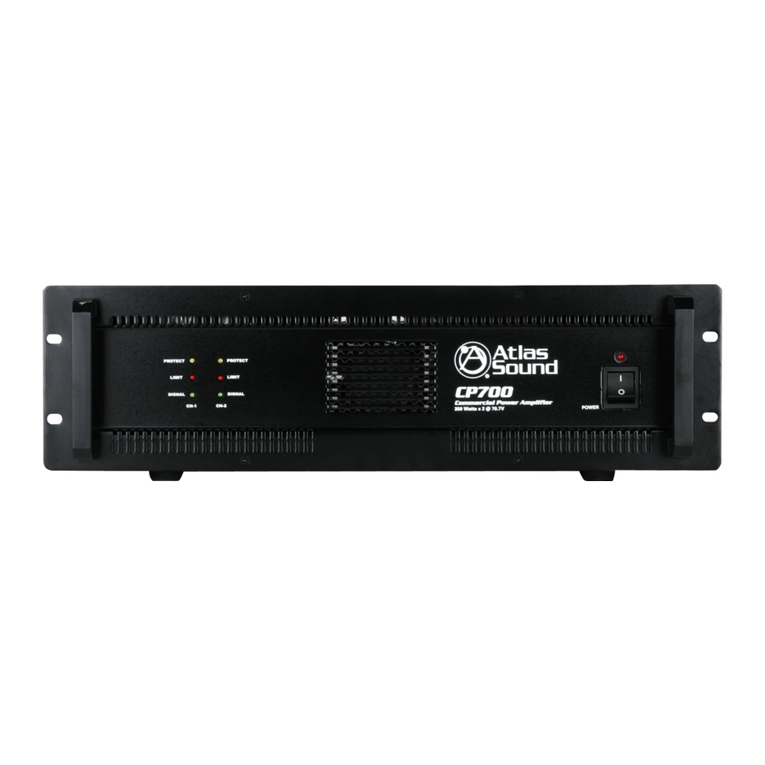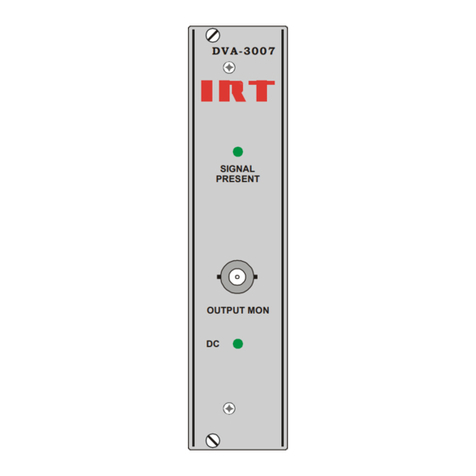
HOW
TO
USE
THIS
MANUAL
If
you
are
an
engineer
or
technician
who
is
familiar
with
sound
system
design,
much
of
this
manual
will
serve
as
a
review
for
you.
The
basic
features
are
|
presented
in
the
"BRIEF
OPERATING
INSTRUCTIONS”
section.
Check
this
and
the
“SPECIFICATIONS”
section,
and
you
will
see
most
of
what
you
need
fo
know.
If
you
would
like
to
know
more
about
AC
power
distribution
and
safety,
grounding,
speaker
systems,
crossovers,
and
so
forth,
this
information
is
also
presented.
Check
the
Table
of
Contents.
Due
to
common
usage
and
for
convenience,
we
will
sometimes
refer
to
dual-
channel
amplifiers
ағ
"stereo"
models
....
especially
because
they
have
a
rear-
panel
MONO/STEREO
switch.
Bear
in
mind,
however,
that
the
two
channels
may
be
used
for
dual
monaural
programs,
for
two
sections
of
a
bi-amplified
speaker
system,
or
for
bridged
monaural
operation
—
so
"stereo"
is
not
neces-
sarily
an
accurate
description
of
the
amplifier
in
every
application.
TABLE
OF
CONTENTS
ІМТНОПОСТІОМ...........................
2
How
crossover
networks
operate
and
what
they
do
..
25
BRIEF
OPERATING
INSTRUCTIONS
............
3
The
difference
between
low
and
high
level
Front
Рапе!.............................
3
CYOSSOVEIS
.............................
26
Rear
Рапе!..............................
4
The
pros
and
cons
of
low
level
and
high
level
Amplifier
Operation
.......................
5
СГОЗЗОМе!
.............................
26
Precautions
regarding
AC
power
source
for
amplifiers
.
5
The
meaning
of
various
amplifier
power
rating
INSTALLATION
...........................
6
methods
..............................
28
Input
Connections...
6
PROTECTION
FOR
SPEAKERS.
...............
29
Output
Connections
.......................
7
Output
relay
...........................
29
MORE
INFORMATION
ON
SOUND
SYSTEM
WIRING
.
9
Current
limiting
........................
-,
29
Balanced
and
unbalanced
wiring
.............-
9
Speaker
Ғи5ес...........................
29
Why
input
transformers
sometimes
are
used.
......
10
Compressor/limiters
..............
ИО
30
Noise
and
losses
іп
low
impedance
and
high
Equalizers
and
filters
................
0000
ee
30
impedance
Нпез...............
ежа
‚
91
High
frequency
driver
protection
networks
Signal
levels,
dynamic
range
and
headroom
......,
11
(Якев)...............................
30
Сғоипдіпа.............................
14
SPECIFICATIONS
.........................
32
|
AC
outlet
wiring
affects
grounding
and
safety
.....
17
DIMENSIONS
............................
32
|
Speaker
Мігіпе..........................
:19
.
BLOCK
DIAGRAM
........................
33
|
.
Distributed
speaker
systems
and
constant
voltage
lines
22
PERFORMANCE
GRAPHS
...................
24
|
How
to
calculate
amplifier
power
output
in
bridged
|
|
MONO
тоде......:....................
23
MULTI-AMPLIFIED
SPEAKER
SYSTEMS
(Biamping,
triamping
and
so
forth)
...................
...
24
